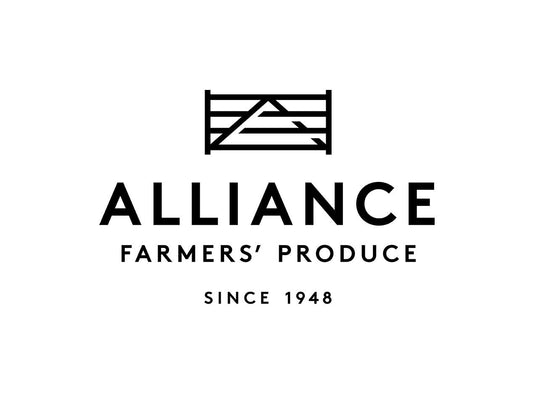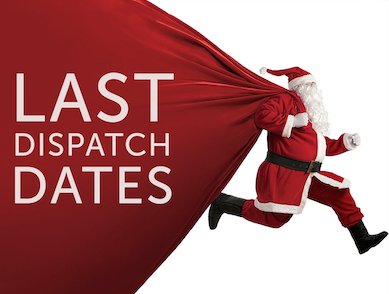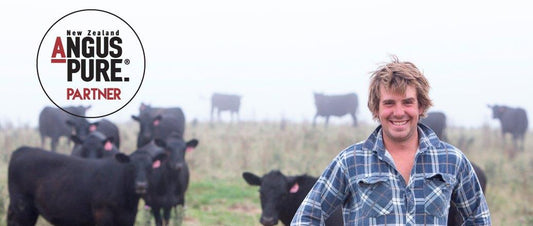Joss Bayly grew up at Wairoa Station - 2000 acres of volcanic Bay of Islands landscape, bound by five kilometres of glorious white sand beaches and the clear blue waters of the Pacific Ocean.
A sheep and beef farmer’s daughter, Joss took regular trips to Kai-Iwi in Whanganui, where her father purchased his Angus bulls.
One year she found a husband there, too.
“He’d always bought his sire bulls and rams from my father and he eventually ended up with a stud sire for his daughter,” jokes John, her husband of 34 years.
They were working on a small block near Matamata when Joss’s father asked them to manage the farm, and they decided to move back home to Paihia in 1985. He unfortunately died within the year, at the young age of 56.
John and Joss run a formidable partnership at the station.
The enthusiastic couple decided to get into stud cattle and “make a real go of things” says John.
The timing of this decision coincided with the dispersal sale at John’s home stud of Kai-Iwi, where they purchased a truck and trailer load of cattle in 1994. At this time is was still run as Kai-Iwi Angus in its new Northland home, but John and Joss were determined to expand their operation.
“It was either get bigger or get out of it, really, so that’s when we bought the Lovell herd from Whangarei,” says Joss.
The amalgamation generated a new beginning and saw the start of a new stud: Waitangi Angus.
The Waitangi Angus name now covers just on 400 registered cows, run alongside 2,500 ewes and trading cattle, when feed allows it.
As you may suspect, the climate is fairly unique in Northland. Heavy rains of often 100mm overnight, warmer winters and frosts down to the water’s edge create an ideal environment for growing cattle.
“Although, the sheep don’t do so well in the high humidity,” says Joss.
It was always brown dirt at Christmas around 25 years ago, but never called a drought. Not any more, though.
“We’ve historically been summer dry but this has changed in recent years. We’re now getting much kinder summer growth,” says Joss.
Kikuyu grass, a hardy sub-tropical creeping grass that was brought into Northland from its native South Africa in the thought it would thrive, has done just that. It forms the base of the pastures, growing rapidly and tolerating both wet spells and serious droughts. Fortunately for the Bayly family, the cattle do very well on it, even cleaning up the roughage that the sheep won’t touch when it gets away on them.
“There’s never much of a spring, which certainly makes life more difficult when putting the cows in calf through an AI programme,” says John.
“More often than not we’re on a falling plain of nutrition rather than a rising one like most other farmers are during spring.”
The strike rate has been disappointing at times.
Around 350 AI straws are implanted over a single cycle but to limited success, due to the dwindling feed. So clean up bulls, selected from various New Zealand herds, as well as using their own yearling bulls, are essential to ensure all the cows get the opportunity to rear a calf.
Adding to the feed problems, the flats can’t be cultivated due to the masses of volcanic rock. So they make do with just grass pastures for the stock, cutting silage from the surplus for use during calving.
The Baylys are confident they produce a product the market demands.
“We need to make sure we don’t rest on our laurels and that we take the breed forward, making more money for our clients,” insists John.
They believe the real value to be added is in improving the carcass qualities.
“Yield grading is important but it’s just shifting the deck chairs really. However a relevant carcass weight is in itself, very important,” he says.
Marbling improvements are the way to secure the future they say, however the Waitangi duo show their frustration at the processors not taking it up here. Traceability and integrity in using the New Zealand brand are also very important.
“If we want to add value to our cattle in New Zealand and get away from the commodity market, we’ve got to start paying a premium for marbling. New Zealand is probably the only country in the world that doesn’t,” says John.
The couple believes it makes sense to try to create a better product with higher marbling to fit the rest of the world market, where they already have expectations and now know it is a better product. John believes it is worth noting that the marbling content does not have to be particularly high, it just needs to be there and it needs to be consistent. Combined with the marketing of pasture-fed New Zealand beef, it is a winning combination.
“AngusPure are trying to get this going but they’re fighting a battle because it suits the processors to dumb it down and just cherry pick what they want as it comes through,” he says.
“That way they have reduced costs. However the downside is that there is little pull through in improving our premium product and we as producers will pay the price.”
Functional cattle are seen as being just the basics at Waitangi. Structural soundness and fertility are paramount and it’s the carcass weights and the carcass data that they feel are adding the value when growing beef.
In their bid to get better carcass attributes into their herd, John has been travelling to the United States every year with a group of other breeders for many years now.
“I just look at what they’re doing over there. They’ve got huge herds of cattle and have been recording data and feeding that all back into their database for a lot longer than us,” he says.
John feels it’s very important to see a bull in the flesh, as well as see its progeny from multiple herds.
When visiting the United States, the group travels to various feedlots and AI centres, looking at the bulls and their progeny all lined up alongside one another. He has noticed the Americans are now putting a lot more focus on the bulls having good feet, jaws and heads, which have all been a big bogie for New Zealand in the past.
“Looking at a bull in person has to be done well, to be certain the bull is proven. It’s much better than just picking one from a catalogue,” John says.
Both John and Joss believe that if an animal performs well in a feedlot, then it will perform well on pasture.
“The information is all there and I’m very comfortable from that point of view,” John says.
Getting information from the United States and translating it back here to New Zealand has been beneficial.
“People says it’s feedlot driven in the US, which I think is bulls**t, really, because if you go to Montana you’ll find they have a summer growing season so short, they can’t even grow a crop of maize,” says John.
Some United States bulls are bred in far harsher environmental conditions than found in New Zealand, say Joss and John.
Although some of Waitangi’s genetics come from Australia, the Baylys feel they have a slightly different focus than we do here in New Zealand.
“The Australians are mostly growing a large-framed animal that will eventually fatten. The ideal animal for a feedlot,” says Joss.
John notes there are some studs in Australia that are more closely aligned to what we’re doing in New Zealand, and doing a great job with their genetics.
To be objective, they are also the first to admit they have made compromises in the past with their phenotype. However, John is adamant that mistakes made along the way have been corrected, all the while heading in a definite direction.
“You can’t get from A to C without going through B.”
Waitangi stud tries to use low birth weight bulls that have the high growth estimated breeding values (EBVs). Tombstone was well used but has unfortunately just passed away. VAR Generation and Musgrave Big Sky have also been successfully used recently, leaving promising progeny.
Low birth weight and short gestation, combined with high growth, has been a winning formula for those yearling bulls being sold into the dairy industry. The dairy X beef calves are all pre-sold in the knowledge that they are sired by Waitangi bulls.

The main focus for the operation is, of course, producing the bulls demanded by their beef clients, and those traits mentioned above fit that profile well.
The first 2-year-old sale was held in 2000 and offered 25-30 bulls. This has now increased to 60-65 bulls to meet demand, and the Baylys believe this current number is about right.
More than half of the bulls are sold to buyers south of the Auckland Harbour Bridge every year.
“We’ve found a few people have dropped out of our 2-year-old sale and have come into the yearling sale for a cheaper alternative. We are also pulling in a lot of new buyers which is positive,” says Joss.
To cater for the demand, the September yearling sale now offers 70 bulls, but Joss is quick to warn they must be well looked after.
“The big thing with yearling bulls is that you must know how to look after them properly. If you don’t, you may be disappointed the following year,” she says.
Around 110-115 replacement heifers are put into the herd every year and these are culled heavily. After both visual phenotype and EBV culling, Bill and Judy Austin are brought in to ultrasound scan them all prior to mating.
“From then on we do what we see as the very obvious culling on fertility and the ability to rear a good calf,” says John.
More and more of their buyers seem to be focussing on EBVs, which is encouraging.
“Some people didn’t understand how to read the data in front of them so well, but they’re starting to now,” says Joss. “Beef & Lamb Genetics have run a workshop here at Waitangi, along with other locations around the country, and this has all helped with the education of our clients and the agents.”
To speed up their genetic progress, Waitangi is putting a higher number of heifers into the herd. This is simply because they have improved figures and will take the programme forward at an increased rate.
“The bulls whose genetics we bring in from the US are all in the top ten percent for performance over there and give us a quantum leap in progress. You can’t tell me they won’t perform well here; that just defies logic,” says John.
All the cows are calved in one big sacrifice paddock as an electric wire is impractical at Waitangi. Silage is fed to the cows and as the calves drop on the ground they are tagged, weighed and walked out onto saved pasture. This is all done with the help of eldest son Philip, who works alongside John and Joss in the day-to-day running of the farm.
Succession and future planning is a tricky one, as always. However, with all three sons wanting to come home farming, John and Joss are faced with a daunting task for a property bound by forestry and the ocean.
The family is optimistic about the future however, having had two strong sales in 2016, with high demand for the Waitangi-bred bulls. The sale results have been coupled with a great spring, which has seen more grass than ever and will hopefully improve the AI results.
“Ultimately we are just trying to move forward with our clients in the right direction,” says John.
Success breeds success and the Bayleys look like they are growing more of it.





